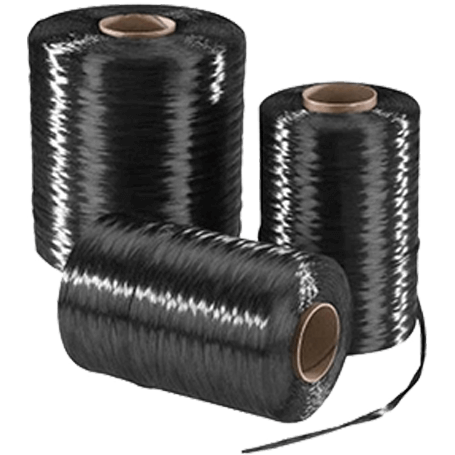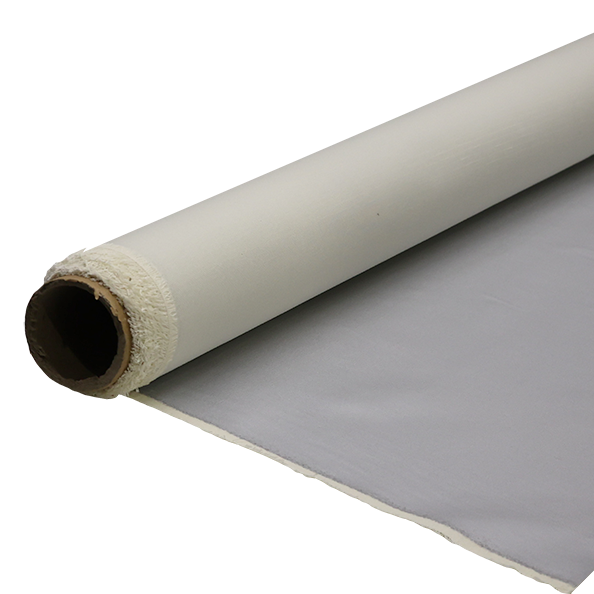Composite Products to Carry Eco-Safety Labels by 2026
-
Table of Contents
“Empowering Sustainability: Composite Products with Eco-Safety Labels by 2026.”
Composite products, which combine multiple materials to enhance performance and functionality, are increasingly being recognized for their potential to contribute to sustainability. By 2026, the implementation of eco-safety labels on these products will serve as a crucial step towards promoting environmental responsibility and consumer awareness. These labels will provide transparent information regarding the environmental impact, recyclability, and safety of composite materials, guiding consumers in making informed choices. The initiative aims to encourage manufacturers to adopt greener practices and innovate in the development of eco-friendly composites, ultimately fostering a market that prioritizes sustainability and safety.
Sustainable Materials in Composite Products
As the global emphasis on sustainability intensifies, the demand for eco-friendly materials in various industries has surged, particularly in the realm of composite products. Composites, which are materials made from two or more constituent materials with significantly different physical or chemical properties, have long been favored for their strength, durability, and lightweight characteristics. However, the environmental impact of traditional composite materials, often derived from non-renewable resources, has prompted a shift towards sustainable alternatives. This transition is not merely a trend but a necessary evolution in response to growing concerns about climate change and resource depletion.
In recent years, the development of sustainable materials for composite products has gained momentum. Biobased resins, for instance, are emerging as viable alternatives to conventional petroleum-based resins. These biobased options are derived from renewable resources such as plant oils, starches, and cellulose, which not only reduce reliance on fossil fuels but also lower the carbon footprint associated with composite production. Furthermore, advancements in technology have enabled the creation of high-performance biocomposites that can match or even exceed the mechanical properties of their traditional counterparts. This innovation is crucial, as it allows industries to maintain performance standards while adhering to environmental responsibilities.
Moreover, the integration of recycled materials into composite products is another significant step towards sustainability. By incorporating recycled fibers and plastics, manufacturers can minimize waste and reduce the demand for virgin materials. This practice not only conserves natural resources but also diverts materials from landfills, contributing to a circular economy. As industries increasingly recognize the value of recycling, the potential for creating high-quality composites from post-consumer waste becomes more feasible. This shift not only enhances the sustainability of composite products but also aligns with consumer preferences for environmentally responsible choices.
In addition to the materials themselves, the manufacturing processes used to create composite products are also evolving. Traditional methods often involve energy-intensive processes that contribute to greenhouse gas emissions. However, innovative techniques such as additive manufacturing and biofabrication are gaining traction. These methods not only reduce energy consumption but also allow for greater design flexibility and material efficiency. By optimizing production processes, manufacturers can further enhance the sustainability of composite products, ensuring that they meet the eco-safety standards expected by consumers and regulatory bodies alike.
As we look towards the future, the implementation of eco-safety labels for composite products by 2026 will serve as a pivotal milestone in promoting transparency and accountability within the industry. These labels will provide consumers with essential information regarding the environmental impact of the products they purchase, enabling them to make informed decisions. Consequently, manufacturers will be incentivized to adopt sustainable practices and materials, fostering a competitive market that prioritizes eco-friendliness.
In conclusion, the shift towards sustainable materials in composite products is not only a response to environmental challenges but also an opportunity for innovation and growth. By embracing biobased resins, recycled materials, and advanced manufacturing techniques, the composite industry can significantly reduce its ecological footprint. As eco-safety labels become a standard by 2026, the emphasis on sustainability will likely reshape consumer expectations and industry practices alike. Ultimately, this evolution will contribute to a more sustainable future, where composite products are not only high-performing but also environmentally responsible.
The Importance of Eco-Safety Labels for Consumer Awareness
As environmental concerns continue to rise, the significance of eco-safety labels in consumer products has become increasingly apparent. These labels serve as vital indicators of a product’s environmental impact, providing consumers with essential information that can guide their purchasing decisions. By 2026, composite products are expected to carry eco-safety labels, a development that underscores the growing emphasis on sustainability and responsible consumption. This initiative not only aims to enhance consumer awareness but also to promote a more sustainable marketplace.
The primary function of eco-safety labels is to inform consumers about the environmental attributes of products, including their composition, production processes, and end-of-life disposal options. As consumers become more environmentally conscious, they seek products that align with their values. Eco-safety labels empower them to make informed choices by clearly communicating the sustainability credentials of various items. For instance, a label may indicate that a product is made from recycled materials or that it has been produced using renewable energy sources. Such transparency fosters trust between consumers and manufacturers, encouraging a shift towards more sustainable practices.
Moreover, eco-safety labels play a crucial role in raising awareness about the broader implications of consumer behavior. When consumers understand the environmental impact of their purchases, they are more likely to consider the lifecycle of a product, from its production to its disposal. This awareness can lead to more responsible consumption patterns, as individuals begin to prioritize products that minimize harm to the environment. Consequently, the introduction of eco-safety labels on composite products will likely catalyze a shift in consumer behavior, promoting a culture of sustainability that extends beyond mere compliance with regulations.
In addition to benefiting consumers, eco-safety labels also incentivize manufacturers to adopt more sustainable practices. As the demand for eco-friendly products increases, companies are motivated to innovate and improve their production processes to meet consumer expectations. This competitive pressure can lead to advancements in technology and materials, ultimately resulting in a more sustainable industry. By requiring composite products to carry eco-safety labels by 2026, regulatory bodies are not only enhancing consumer awareness but also driving manufacturers to prioritize sustainability in their operations.
Furthermore, the implementation of eco-safety labels can contribute to a more circular economy. By providing clear information about the recyclability and compostability of products, these labels encourage consumers to make choices that support waste reduction and resource conservation. When consumers are equipped with knowledge about how to properly dispose of or recycle products, they are more likely to engage in practices that minimize environmental impact. This shift towards a circular economy is essential for addressing the pressing challenges of waste management and resource depletion.
In conclusion, the introduction of eco-safety labels on composite products by 2026 represents a significant step towards enhancing consumer awareness and promoting sustainable practices. These labels not only inform consumers about the environmental impact of their purchases but also encourage manufacturers to adopt more responsible production methods. As awareness grows and consumer behavior shifts, the potential for a more sustainable marketplace becomes increasingly attainable. Ultimately, eco-safety labels serve as a bridge between informed consumer choices and the collective effort to protect our planet for future generations.
Regulatory Trends Impacting Composite Product Labeling by 2026
As the global emphasis on sustainability intensifies, regulatory trends are increasingly shaping the landscape of composite product labeling. By 2026, it is anticipated that composite products will be required to carry eco-safety labels, reflecting a broader commitment to environmental responsibility and consumer transparency. This shift is not merely a response to consumer demand; it is also a proactive measure by governments and regulatory bodies aiming to mitigate the environmental impact of various industries.
One of the primary drivers behind this regulatory trend is the growing recognition of the environmental footprint associated with composite materials. Composites, which are often made from a combination of natural and synthetic materials, can pose significant challenges in terms of recyclability and biodegradability. As such, regulatory agencies are increasingly focusing on establishing standards that ensure these products are not only safe for consumers but also environmentally sustainable. This has led to the development of guidelines that mandate the disclosure of material composition, production processes, and end-of-life options for composite products.
Moreover, the push for eco-safety labeling is being fueled by international agreements and initiatives aimed at reducing carbon emissions and promoting sustainable practices. For instance, the Paris Agreement has catalyzed numerous countries to adopt stricter environmental regulations, which in turn influences the labeling requirements for composite products. As nations strive to meet their climate goals, the integration of eco-safety labels becomes a crucial component of their regulatory frameworks. This alignment between international commitments and national policies underscores the importance of transparency in the marketplace, allowing consumers to make informed choices that align with their values.
In addition to governmental regulations, industry stakeholders are also recognizing the importance of eco-safety labels as a means of enhancing brand reputation and consumer trust. Companies that proactively adopt eco-labeling practices can differentiate themselves in a competitive market, appealing to environmentally conscious consumers. This trend is particularly evident in sectors such as construction, automotive, and consumer goods, where the demand for sustainable products is rapidly increasing. As a result, businesses are not only responding to regulatory pressures but are also embracing eco-safety labeling as a strategic advantage.
Transitioning to the practical implications of these regulatory trends, manufacturers of composite products will need to invest in research and development to ensure compliance with upcoming labeling requirements. This may involve re-evaluating supply chains, sourcing sustainable materials, and implementing more efficient production processes. Furthermore, companies will need to engage in thorough documentation and verification processes to substantiate their eco-safety claims. This shift towards greater accountability will likely lead to innovations in material science and engineering, as businesses seek to create composites that meet both performance and environmental standards.
As the deadline for compliance approaches, it is essential for manufacturers to stay informed about evolving regulations and to actively participate in discussions surrounding eco-safety labeling. Collaboration with regulatory bodies, industry associations, and environmental organizations will be crucial in shaping effective labeling standards that benefit both consumers and the environment. In conclusion, the regulatory trends impacting composite product labeling by 2026 signify a pivotal moment in the intersection of sustainability and consumer safety. As eco-safety labels become a standard requirement, they will not only enhance transparency but also drive innovation and accountability within the composite materials industry, ultimately contributing to a more sustainable future.
Q&A
1. **Question:** What are composite products in the context of eco-safety labels?
**Answer:** Composite products are items made from two or more different materials, such as plastics combined with metals or textiles, which require specific labeling to indicate their environmental impact and safety.
2. **Question:** Why is it important for composite products to carry eco-safety labels by 2026?
**Answer:** Eco-safety labels help consumers make informed choices by providing information on the environmental sustainability and safety of products, promoting responsible consumption and encouraging manufacturers to adopt greener practices.
3. **Question:** What are the potential benefits of implementing eco-safety labels on composite products?
**Answer:** Benefits include increased consumer trust, enhanced market competitiveness for sustainable products, reduced environmental impact, and compliance with regulatory standards aimed at promoting sustainability.By 2026, the implementation of eco-safety labels on composite products will signify a significant shift towards sustainable manufacturing practices. These labels will enhance consumer awareness, promote environmentally friendly choices, and encourage manufacturers to adopt greener materials and processes. The adoption of such labeling will not only help in reducing environmental impact but also foster a market for sustainable products, ultimately contributing to a more eco-conscious economy.











